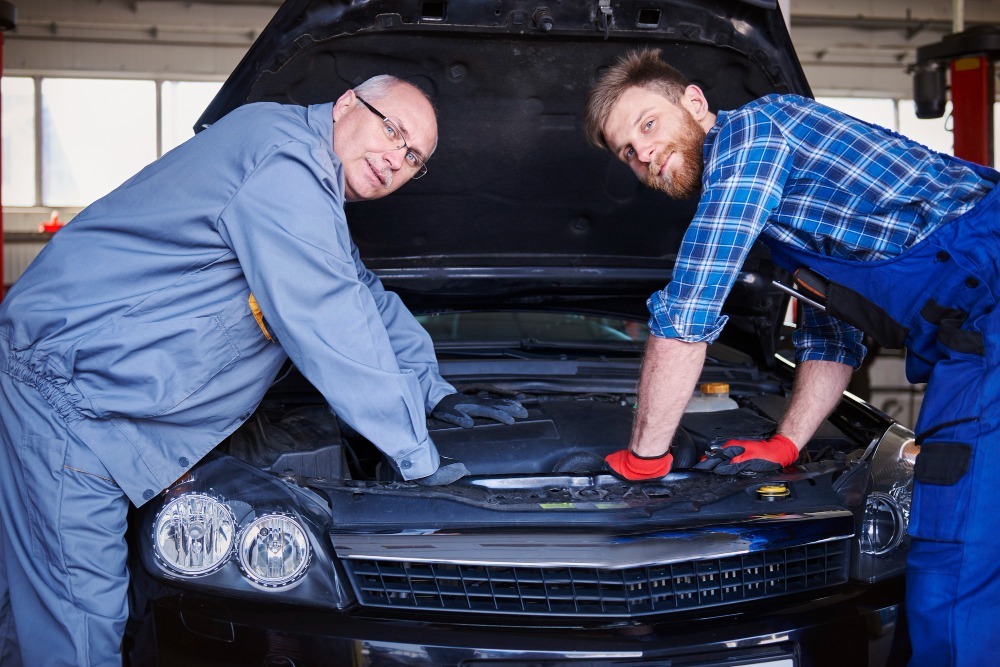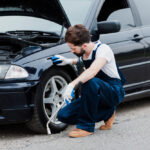Does the thought of car maintenance send shivers down your spine? Visions of expensive mechanics and confusing repair manuals clouding your mind? Fear not, fellow drivers! This comprehensive guide empowers you with essential car maintenance hacks you can tackle yourself. No prior mechanical experience necessary!
Taking charge of basic car maintenance offers a multitude of benefits
- Save Money: DIY maintenance is significantly cheaper than routine visits to the mechanic.
- Empowerment: Gaining knowledge about your car fosters a sense of control and self-reliance.
- Early Detection: Regular maintenance helps identify minor issues before they snowball into expensive repairs.
- Peace of Mind: Knowing your car is in tip-top shape translates to a smoother, safer driving experience.
So, grab your toolbox (or a well-stocked glove compartment) and let’s delve into the world of DIY car maintenance magic!
Safety First: Essential Gear and Precautions
Before we dive in, prioritize safety:
- Consult Your Owner’s Manual: This holy grail of car knowledge provides specific maintenance intervals and instructions for your car model.
- Gather the Right Tools: Equip yourself with a basic toolkit that includes screwdrivers, wrenches, pliers, a socket set, a flashlight, and a rag.
- Work in a Well-Lit Area: Ensure you have ample light to see what you’re doing and avoid mistakes.
- Park on Level Ground: Engage the parking brake and use wheel chocks to prevent the car from rolling.
DIY Maintenance Magic: Simple Hacks for a Healthy Car
Now, let’s explore some essential car maintenance tasks you can conquer yourself:
- Fluid Fundamentals: Regularly check and top off essential fluids like engine oil, coolant, brake fluid, and windshield washer fluid. Each fluid plays a crucial role in your car’s performance.
- Engine Oil: The lifeblood of your engine! Consult your owner’s manual for the recommended oil type and change it based on mileage intervals. Checking the oil level is a breeze: locate the dipstick, pull it out, wipe it clean, reinsert it fully, and pull it out again to check the oil level against the markings on the dipstick.
- Coolant: Maintains optimal engine temperature. Check the coolant level when the engine is cold by locating the overflow reservoir. The coolant level should be between the “min” and “max” markings.
- Brake Fluid: Critical for safe braking. The brake fluid reservoir is usually translucent, allowing you to visually check the fluid level. If the level is low, consult your owner’s manual for proper topping-off procedures.
- Windshield Washer Fluid: Ensures clear visibility during rain or debris. Top up the reservoir with a pre-mixed washer fluid solution suitable for your climate.
- Tire TLC (Tender Loving Care): Proper tire maintenance promotes safety, fuel efficiency, and extends tire life.
- Check Tire Pressure Regularly: Use a reliable tire pressure gauge (usually found near gas pumps) to inflate tires to the recommended pressure listed on a sticker inside the driver’s door jamb. Don’t forget the spare tire!
- Visual Inspection: Regularly inspect your tires for signs of wear and tear, such as cracks, bulges, or uneven tread wear. Replace tires if the tread depth reaches the wear bars (the small raised indicators within the tire tread).
- Tire Rotation: Rotate your tires regularly according to your owner’s manual recommendations. This promotes even wear and tear.
- Air Filter Finesse: A clean air filter ensures optimal engine performance and fuel efficiency.
- Locate the Air Filter: The air filter housing is typically located in the engine bay. Consult your owner’s manual for its exact location.
- Inspect and Replace: Visually inspect the air filter for dirt and debris. Replace it if it appears clogged or dirty. A clean air filter is usually white or light gray, while a dirty one will be brown or black.
- Wiper Wisdom: Windshield wipers are essential for clear vision during bad weather.
- Check for Wear and Tear: Inspect the wiper blades for cracks, tears, or worn-out rubber edges. Replace them if they streak or don’t make proper contact with the windshield.
- Clean the Wiper Blades: Routinely clean the wiper blades with a damp cloth and soapy water to remove dirt and debris that can hinder their effectiveness.
Beyond the Basics: Advanced DIY Hacks for the Savvy Driver (Optional)
Feeling confident? Here are some advanced DIY hacks for the car maintenance enthusiast:
- Battery Boost: A healthy battery ensures a smooth start. While replacing a car battery might be best left to a professional for some, basic maintenance can extend its lifespan:
- Clean the Battery Terminals: Corrosion buildup on the battery terminals can impede electrical connection. Use a wire brush (not a metal brush) and a baking soda solution to clean the terminals and cable connectors.
- Tighten Battery Connections: Ensure the battery cable connections are secure. Loose connections can cause starting problems.
- Lighten Up: Headlights, taillights, and brake lights are crucial for safety. Regularly check their functionality and replace burnt-out bulbs yourself. Most car models allow for easy access to headlight and taillight housings. Consult your owner’s manual for specific instructions on bulb replacement.
- Cabin Air Filter Comfort: A clean cabin air filter improves air quality inside your car by filtering out dust, pollen, and other allergens. Consult your owner’s manual for the location and replacement procedure for your specific car model.
Bonus Tip: The Power of Observation
Develop the habit of being observant towards your car. Pay attention to unusual sounds, vibrations, or warning lights on the dashboard. Early detection of potential issues allows you to address them promptly and potentially avoid costly repairs down the road.
Remember, Your Limits: When to Seek Professional Help
While DIY car maintenance empowers you to tackle basic tasks, it’s crucial to recognize your limitations. Here are some situations where seeking professional help is recommended:
- Complex Repairs: If a task requires specialized tools or knowledge, don’t hesitate to consult a qualified mechanic. Attempting complex repairs yourself could lead to further damage.
- Safety-Critical Systems: For repairs related to brakes, steering, or suspension systems, leave it to the professionals. These systems are crucial for safe driving and any mistakes could have serious consequences.
- Major Fluid Leaks: Significant fluid leaks require professional diagnosis and repair. Don’t attempt to address major leaks without proper knowledge and tools.


